|
0 Comments
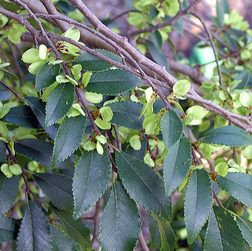 The Lacebark Elm has many, many little seeds. It was probably the burning and dropping of these seed pods that saved the Santa Rosa man's life. The Lacebark Elm has many, many little seeds. It was probably the burning and dropping of these seed pods that saved the Santa Rosa man's life. For the man who loved trees—it was this tree who saved him… In the first story on the Santa Rosa Fire, the hero tree was an Ulmus Parvifolia...a Chinese or Lacebark Elm. “Everyone got out…I woke them up…but I wouldn’t have gotten up if it wasn’t for this tree here.” He pointed to the lean, upright bones of a street tree—still standing tall (if skeletal) sixty feet in the air. …"My wife was always on me to cut it down but we lived in the house for 35 years, and I never did. It rained down little pellets on my window…I thought it was hail." "That tree woke me up…and I woke up all my neighbors…saved my life …that tree.” Trees Talk. For gardeners, this is not news. Trees are neither silent nor still. Like us they use air to speak in rustles, moans, whistles, and sometimes crashes. Their shelter is just one reason they help us be still, but do they talk? They talk to each other and to other trees through their roots in relationship with various fungi but also thru chemical compounds they emit thru their leaves indicating pests nearby or grazing animals are nearby. In the bestselling book, The Hidden Life of Trees, Peter Wohlleben documents the stories of these slow interrelationships of root to root, and leaf to leaf tête-à-têt and considers them “wonderful beings” with innate adaptability, intelligence, and the capacity to communicate with — and heal — other trees. Even if you cannot get your brain around this new research, gardeners (and those who have eyes to see…) already know that trees talk…to us. They talk to us through heart stopping beauty, the shady invitations to respite on a hot day, and through the living-large celebration of the seasons. Consider going out today and get to know a tree…it may save your life. Organic materials change over time.
We are, most certainly, in that category as human beings; we change over time; we are all time travelers:
Sometimes our culture judges these changes as beautiful and that we say, they say get better with time: wine, cheese... a garden, a patina ...and maybe even a life. Weeds get in the way I was perhaps eight, when I waged my very first argument to protect a beautiful, micro flower from the gratuitous judgment of "That? That is just a weed." What is a weed? It is something that does not fit in a garden and in some way is unpleasant or deadly. I see fully formed weeds in the lives of individuals and families in hospice. It is like a sped up timelapse. The weed seeds imbedded in our thoughts have matured to invasive weeds and overtaken the gardens of their lives. Other seeds are such kindly demonstrations of love and lives well lived, that it feeds me...just being there. It is not the quantity of people surrounding the people passing, that is up to fate. But I see the beauty of their mind-gardens. They are still using it all, accepting it all and delighting in who shows up. They have ceased the hard work of weeding out the unpleasant, because they have discovered that in a balanced garden, the growth of the good pushes out the weeds . Over the course of their lives, they have learned to focus on the good, the beautiful, the blessings and allow those to grow. They have allowed themselves to be loved. For the most part, it has become a self-weeding garden. The growth of the good, is the pruning. Memory is a Self-weeding, self seeding garden. What and how I choose to remember – makes a difference in my life now.
Alice Sommer Hertz is an optimist; her twin sister died decades ago; she was the pessimist which usually translates to a reduction in life by 14 years according to recent studies. Her garden is self-seeding. I want mine to be too. With my chaplain "hat" on, I am moved by any effort of a community to remember... There might be better funded efforts assisted by famous designers doing good. But the small heartfelt efforts with little more to work with than a left-over side lot of weeds, volunteers and some scrappy Michiganders are what it is all about. Like a recent effort where a new memorial garden was dedicated for veterans - here and gone. These folks showed up with heart and used what they had to make space sacred. Every time they pass those signs, or flowers or weeds they will remember that they stood up and said to the world that their loved ones mattered and what they went through did too. There is no greater gift than to remember love: their love and ours. It helps us who remain, inform the time we have left to live. Mason-based Heartland Hospice and volunteers from Eaton Rapids High School on the grounds of Dansville Country Care, Photo Matthew Dae Smith 7/2014; www.LSJ.com
In parallel, however...my landscape architect "hat", would recommend planting something enduring. A simple grove of evergreen trees might ground and tether their memories to this place to hold the sacredness past their own dedication and presence there. “The best time to plant a tree is twenty years ago. The second best time is now.”- Anonymous. But they did good, even without a pro to help. |
What makes space sacred for you?Making San Francisco Bay Area native, edible & water thrifty gardens... Archives
February 2019
Categories
All
|
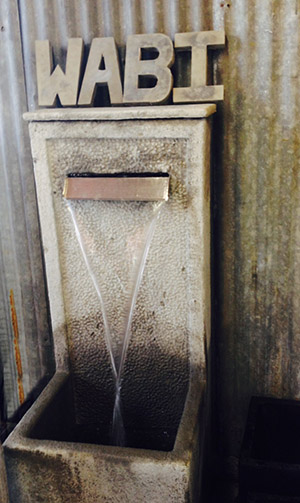
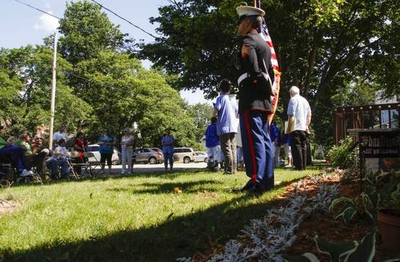
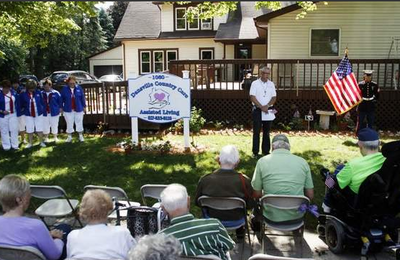
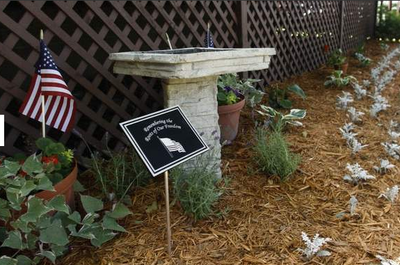
 RSS Feed
RSS Feed
